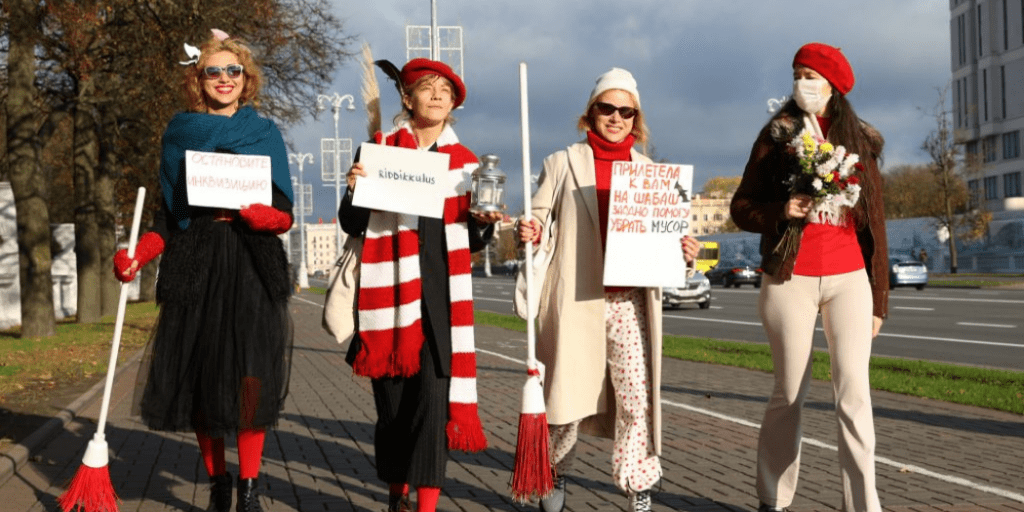
The Belarus People’s Assembly in Minsk on February 11-12 was a retro neo-Soviet affair. With the pomp and circumstance of a 1970s-vintage Communist Party Congress, strongman Alyaksandr Lukashenka assailed six months of protests against his autocratic regime as a Western-controlled “rebellion” to a room of nearly 3,000 handpicked loyalists under a banner reading Unity! Development! Independence!
Days earlier, on February 7, cities in Europe and North America marked Solidarity With Belarus Day at the request of exiled opposition leader Sviatlana Tsikhanouskaya with a series of creative and innovative public displays. These included a drone in Kyiv carrying the flag of the pre-Soviet Republic of Belarus; the facade of the Estonian parliament in Tallinn and the skies over the Latvian capital Riga lit up in red and white; and a giant flag unfurled and carried down the streets of Gdansk, Poland. Tsikhanouskaya also launched an online solidarity conference that showcased her launch of Belarusian People’s Embassies.
Something old, something new. And the contrast could hardly be sharper. But the disparity between the Lukashenka regime’s visible staleness and the opposition’s jubilance and freshness is about more than just optics. Political change in authoritarian regimes consists of an inside game and an outside game-the politics of the elite and the politics of the street. And what the events of the past several weeks reveal, above and beyond the contrasting visuals, is that the elite is tired, divided, and out of ideas, while the street is energized, invigorated, and innovative.







